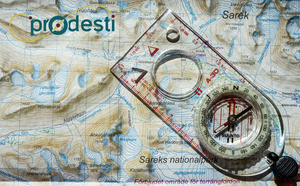Germany and Austria are key source markets, but visitors from China, Brazil and India have been increasing − a trend which is expected to continue towards 2017.
The number of international arrivals to Hungary is expected to grow at an annual rate of 2.91%, to reach 12 million by 2017.
According to Timetric, there are three key drivers to this growth : The popularity of health related tourism, a new government-led voucher scheme and the introduction of new low-cost airlines.
The number of international arrivals to Hungary is expected to grow at an annual rate of 2.91%, to reach 12 million by 2017.
According to Timetric, there are three key drivers to this growth : The popularity of health related tourism, a new government-led voucher scheme and the introduction of new low-cost airlines.
Hungary is Europe’s leading dental tourism destination
Each year, 7,000 people visit Hungary to receive dental treatment, making it Europe’s leading dental tourism destination.
Of all the international arrivals to Hungary in 2012, 13.2% visited the country for health and wellness purposes.
As a part of the National Tourism Development Concept (2012–2014), the government has planned the development of three to five health resorts and a further eight to ten regional baths by 2024.
Of all the international arrivals to Hungary in 2012, 13.2% visited the country for health and wellness purposes.
As a part of the National Tourism Development Concept (2012–2014), the government has planned the development of three to five health resorts and a further eight to ten regional baths by 2024.
New voucher card support domestic tourism
The Széchenyi Recreation (Szép) card, a voucher scheme that was introduced in 2012 to promote domestic tourism, continues to grow in terms of cardholders.
The card has been issued to 900,000 people and is accepted in 51,000 catering and accommodation establishments.
In 2013, HUF12.9 billion (around US$59 million) was spent on accommodation alone through the card, making the voucher scheme a great success.
The card has been issued to 900,000 people and is accepted in 51,000 catering and accommodation establishments.
In 2013, HUF12.9 billion (around US$59 million) was spent on accommodation alone through the card, making the voucher scheme a great success.
Low-cost carriers record growth due to Malév’s demise
Although the bankruptcy of Malév Hungarian Airlines in early 2012 was considered a major setback for the aviation market, low-cost carrier (LCC) penetration is increasing.
Wizz Air has since expanded to become Hungary’s largest airline, while Ryanair is expanding its network in Hungary.
To 2017, the aviation market is expected to recover well from the loss of its national airline.
Wizz Air has since expanded to become Hungary’s largest airline, while Ryanair is expanding its network in Hungary.
To 2017, the aviation market is expected to recover well from the loss of its national airline.

























![De l’auberge de jeunesse au Generator : toute une histoire [ABO] De l’auberge de jeunesse au Generator : toute une histoire [ABO]](https://www.tourmag.com/photo/art/large_16_9/93247694-65219608.jpg?v=1765984636)















